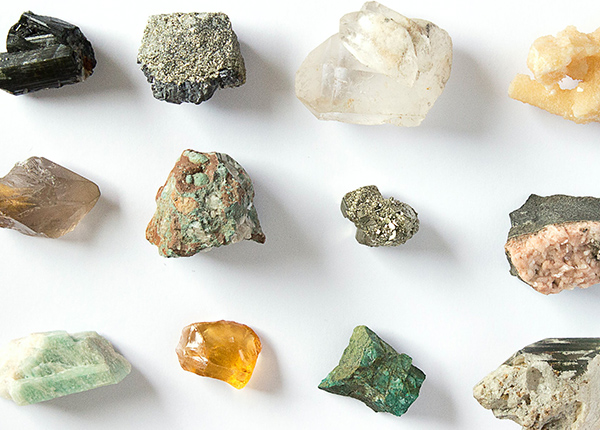
- Introduction
- Business Qualities and Name
- Customers
- Similar Businesses
- Marketing
- Websites and Social Media
- Chapter Review

Introduction
Marketing lets people know about your business and encourages them to buy your product or service. In your marketing plan you should describe:
- Why people need your product or service
- Your target customers
- Other businesses that are similar to yours
- The marketing strategies you will use to reach your target customers
It is important to describe how and where you find information so people who review your marketing plan know your ideas are based on research and not guesses.
This chapter will help you complete the Marketing Plan section on the Business Plan Outline you downloaded in Chapter 4.
Parts of the Marketing Plan
Business Qualities
Your marketing plan needs to include information about the qualities of your product or service. What makes your business special? How do you stand out from similar businesses? Why will customers want to use your business?
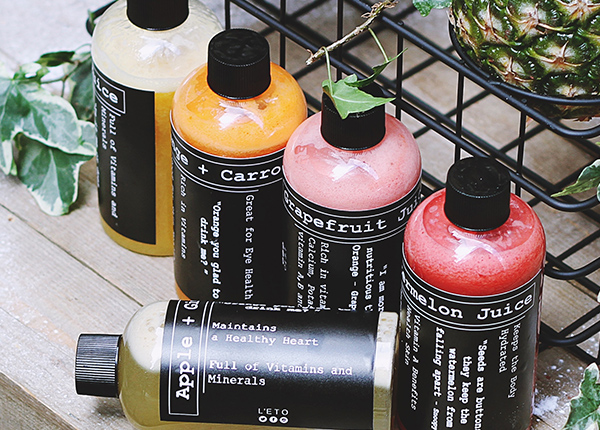
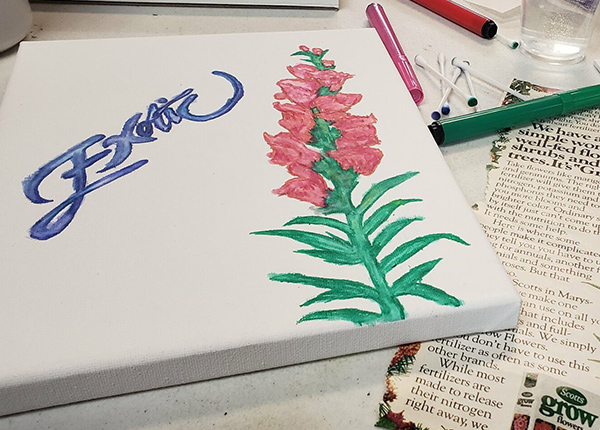
Business Name
Once you figure out the important qualities of your business, think about how your business name reflects those qualities. A good business name lets customers know what your business sells or does.
Customers
Your marketing plan should include information about your target customers. Your customers might be individuals, or they might be other businesses.


Similar Businesses
It is important to know about similar businesses that might be competing with you. You should know how they are the same and different from your business. What do they charge? What are their challenges and successes? How do they advertise to their customers? You can answer these types of questions by doing some market research.
Marketing Strategy & Methods
Marketing strategies and methods are the things you do to tell customers about your business. These include things like designing a logo, making a website, and handing out business cards and flyers.
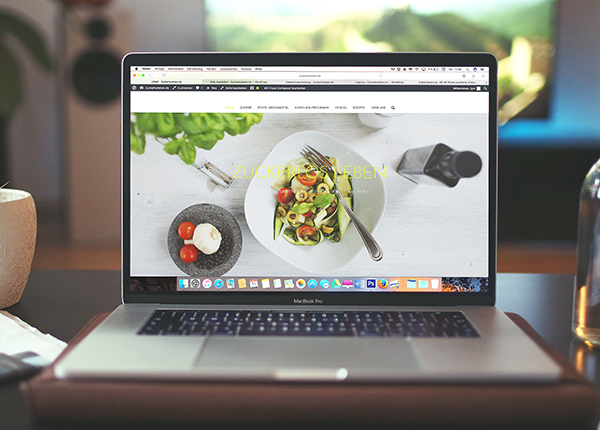
Use the "Return to Tabs" button below to jump to the tab navigation bar.
Then continue by selecting the next tab in the list.
Business Qualities and Name
Business qualities are the things that make your product or service valuable to customers. Knowing what these are helps you focus your marketing efforts to attract customers.

Business Qualities
Small businesses have a hard time attracting customers based on low prices. The reason for this is that larger businesses can do things like buy materials in bulk, which lets them make their products or provide their services at lower costs.
However, there are many other reasons that customers choose businesses. Here are some:
-
Location and hours
- The business is easier to get to or is open at more convenient times
-
High-quality product
- The product is better quality and lasts longer
- The product or service is unique
-
Image
- The business is part of a “buy local” campaign
- The business is sustainable or uses recycled materials
-
Customer service
- The business has excellent customer service. Customers can come in and have their questions answered and issues taken care of quickly
- The business has a welcoming feel to it
Think about why customers will go to your business. Do any of the reasons above apply to your business? What other reasons can you think of?
Getting Started
To help you think about the qualities of your business, download the fillable Business Qualities Worksheet and answer the following questions. Answers to these questions can be used to start developing your marketing plan.
-
What are some important qualities of your product or service?
- What makes your product or service unique?
- What are your strengths?
- How will customers benefit from buying your product or service?
- What types of customers are you trying to attract?
You can download an example Business Qualities Worksheet for John’s Woodworking and review the next section for ideas.

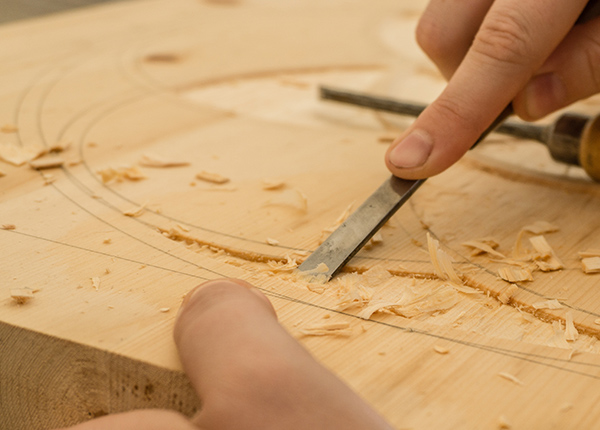
Example: John’s Woodworking
John is starting a custom woodworking business. These are his answers about business qualities.
What are some important qualities of your product or service? What makes your product or service unique? What are your strengths?
- I have skills to complete detailed and quality work.
- I can work with many different types of wood to create one-of-a-kind products.
- I can work at the customer’s home or in my shop.
- I am dependable.
- I work directly with customers to meet their personal needs.
How will customers benefit from buying your product or service?
Customers will benefit from:
- Quality installation
- Products that look good and work well
- Customized products that are exactly what the customer wants
- A contractor that shows up and delivers an end-product on time
- A contractor who listens to and does what the customer wants
What types of customers are you trying to attract?
I hope to attract customers who:
- Own a home but don’t have skills to do carpentry work
- Want or need a custom item
- Have the income to pay for customized carpentry
- Want someone they can trust to do the work in their home
Business Name
You can use information about the qualities and benefits of your business to help polish your business name. Things to think about as you decide on your business name include:
- Does the name describe what your business does?
- Does the name describe a positive quality of your business?
- Does the name have meaning for your community?
Other things to think about:
- Make sure your business name is not offensive, confusing, or something customers might find distasteful.
- Make sure your business name is different from other businesses so customers don’t get you confused.
- Think about how your business name looks as part of a logo, on a business card, and on a website. Generally, shorter business names are more visually appealing.
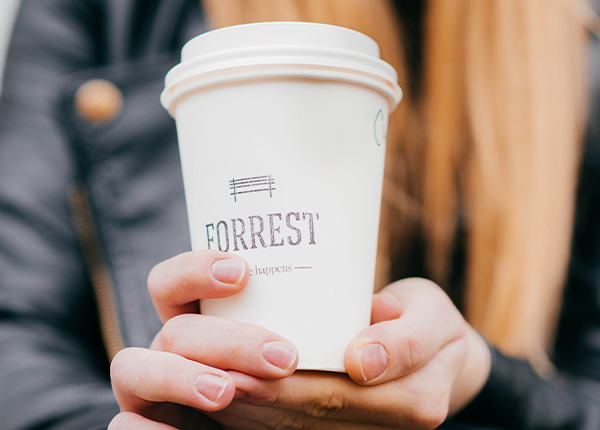
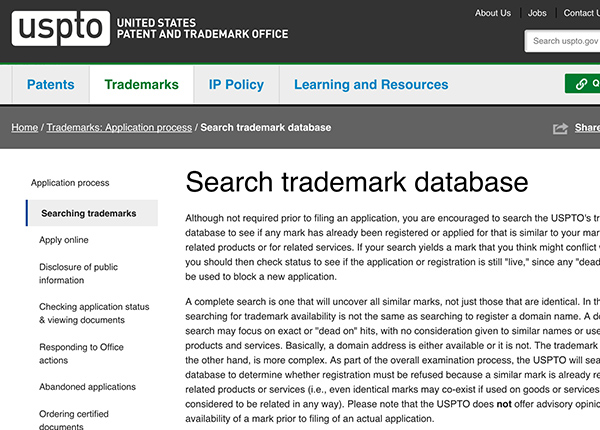
Business Name Availability
Once you decide on a business name, you need to find out if it is available and okay to use. You could get into legal trouble if your business name matches another business.
-
Make sure the name or a similar name is not being used in your community or a nearby community.
- Google the name to see if it comes up in a search
- Walk or drive around your town and ask people on the street if they know of any nearby businesses that have a similar name
- Check at the U.S. Patent and Trademark Office to make sure the name is not already trademarked.
- Make sure your business name doesn’t match another business name in the state by contacting your state’s filing office for instructions on how to search the state database.
For more information about business names, check out this article from the U.S. Small Business Administration: Choose your Business Name. It shares information about how to register your business name.
Click on the "Section Review" button for a short review of the content of this tab.
Use the "Return to Tabs" button below to jump to the tab navigation bar.
Then continue by selecting the next tab in the list.
Customers
This section describes your potential customers. Potential customers can be:
- People who will buy your product or service
- A business that will use your product or service to produce their own product (for example, if you make salsa, another business might use your product in their restaurant)
- A reseller that will resell your product or service (for example, a jewelry shop that will sell earrings you make)

Customer Groups
Knowing Your Customers
Not every customer will buy your product or service for the same reasons. Knowing about your customer groups, or different types of customers, will help you figure out how to market to each of them.
For example, if you are selling pizza, you might have two different customer groups:
- High school students who buy individual slices of pizza for lunch or after school
- Families who buy whole pizzas for dinner
You will need to use different types of marketing to reach these different groups. Delivering fliers door to door might be a good strategy to reach families, but probably won’t be a good way to reach students. To reach students, you might put fliers on cars at the high school or at the local community center.
Defining Segments
One way to define your customer groups is by key characteristics. These can be things like where people live, how much money they earn, or their hobbies or interests. Some characteristics to think about include:
- Gender
- Age range (i.e. high school, working age, elderly)
- Education level
- Income level
- Where customers live (i.e. local, in state, or national)
- How they will get to or access your business (i.e. at a location or online)
- Their hobbies or interests
- Where they shop and the types of things they buy


Business Customers
If your potential customers are businesses, you should describe them by things like:
- The type and size of the businesses
- Where the businesses are located
- How they will access your business
- Other services or products they purchase
Customer Behaviors
Another way to divide markets is by customer behaviors. These could be things like:
- Reason for purchase (e.g. convenience, quality, price, taste)
- Frequency of purchase (e.g. daily, weekly, monthly, yearly)
- Amount purchased at a time
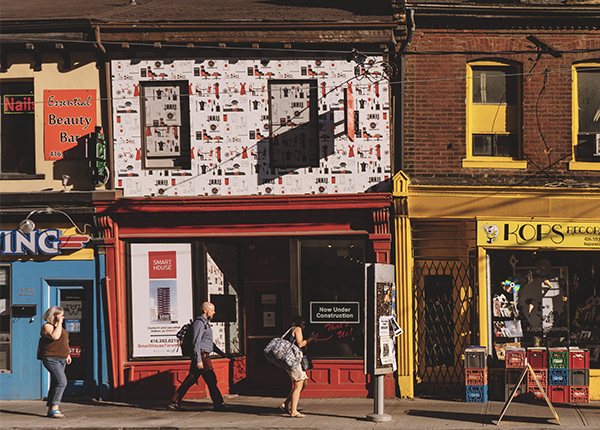

Example: Big Sky Horse and Saddle
Big Sky Horse and Saddle is a small ranch operation that teaches riding lessons. They segment their market by:
- Age group
- Riding styles (Western, English, and Dressage)
- Experience level
Strategies to market to different customer segments include:
- Children: reached through a summer parks and recreation program and school packets sent home to parents
- Adults: reached through a website and social media, such as Facebook
- Riding interests and experience: reached through advertising in local newsletters of Western and Dressage riding groups
Customer Research
Customer research is how you learn about the people who will potentially buy your product or service. It is important to know what your customers want so you can tailor your business and outreach to them.
Customer research can tell you:
- How much your customers are willing to spend, which helps you set prices.
- How often customers will buy from you, which helps you know how much to stock and how to plan for busy times of year (for example, around holidays).
- Customer preferences, which helps you know what to offer. For example, if very few people in your community like green olives on pizza, then maybe you shouldn’t offer green olives as an option. But if many people like green chilis, that could be something unique you could offer that would make you stand out from other pizza restaurants.
There are many ways to do customer research. Lots of information can be found online, but it’s also important to learn about people’s preferences about your product or service. This can be done through interviews or surveys.
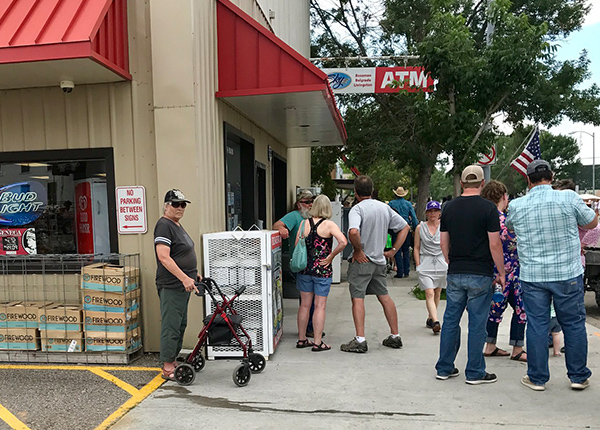

Web Searches
You can use web searches to figure out how many potential customers live in the area and may use your business. To start out, Google the name of the town where your business will be located, such as “Polson, Montana, demographics”.
Check out the Resources chapter for specific websites or places to search for demographic information online.
Surveys and Interviews
Surveys and interviews are good ways to find out more about your target customers. Surveys can be good for getting brief answers to a series of questions. Interviews help you get more in-depth information about customer preferences. No matter what approach you use, it is important to record the information so you can review it carefully and objectively.
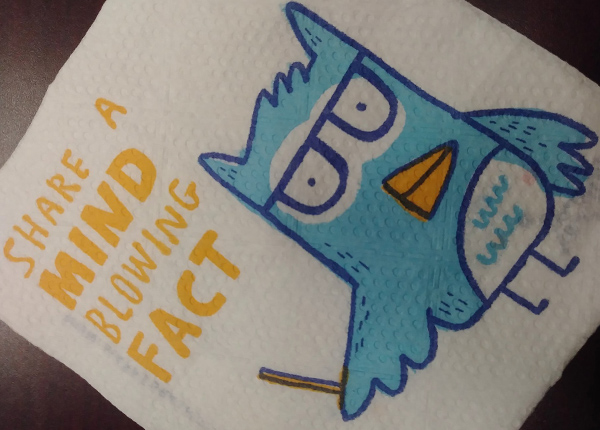

What do you want to know?
First, think about what you want to know. Write down your questions so you have them to refer back to.
For a pizza shop, you might ask:
- What are your top 3 favorite pizza toppings?
- How often do you buy pizza?
- Where do you buy pizza in your community?
For a housepainter, you might ask:
- When was the last time your house interior or exterior was painted?
-
Who did the work—did you paint yourself or hire a contractor?
- Why did you make that choice?
- If you got an estimate but didn’t hire a contractor, why not?
- If you are planning a paint job in the future, what will factor into your decision to hire a contractor?
For a bakery, you might ask:
- What types of baked goods do you buy?
- How often do you buy baked goods?
- How much do you typically pay for a pastry? Fresh loaf of bread?
- Is it important to you that there are gluten-free options?
Methods
Once you have questions in mind, think about the best way to get the information. Should you do a short three question survey with several people? Or should you sit down and have a longer interview with a more limited number of people?
Before you start conducting surveys or interviews, use your company description to tell people about your business idea concisely and clearly. Remember, the company description is a 1-3 sentence description that includes your business name, a short description of the products or services your business will provide, and a short description of your target customers.


Surveys
Surveys are useful for reaching a larger number of people. For instance, if you want to start a business that attracts people from your community, you might do brief in-person surveys outside the local grocery store, where your neighbors shop.
If your target customers are other businesses, telephone surveys might be a good strategy for contacting other businesses who may be interested in buying your product or service.
Online Surveys
Another good place to ask questions is through social media, such as Facebook. Some of these platforms have special interest groups that you might be able to join. Depending on your customers, you could ask questions in local community groups, or in special interest groups related to your business. For example, if you are going to make wire wrapped jewelry, you could find and join some groups. Then, after you’ve looked at the content the group shares, you could post on the group message board to ask about popular designs.


Resources
To find out more about developing and conducting surveys, check out:
- SurveyMonkey’s Writing Good Survey Questions
- SurveyMonkey also has various tutorials that are useful for creating online surveys
- Quick and Dirty Tips.com’s: How To Write Good Survey Questions
- Google Forms can be used to create surveys
- SoGoSurvey also has free basic options for conducting online surveys
Interviews
Interviews can help you find out more in-depth information about your target customers. Interviews can be with individuals or small groups of people, where you collect information that is harder to gather using a survey.
For example, if you are interested in making pottery, you could interview the owners of local gift and art shops that might sell your pottery. You could ask them if they currently have any pottery for sale in their stores, what types of pottery sells the best (e.g. mugs, platter, bowls), how much they sell them for, and if their customers tend to like a certain design or color.
Take notes during or right after interview conversations to keep track of what you learn.

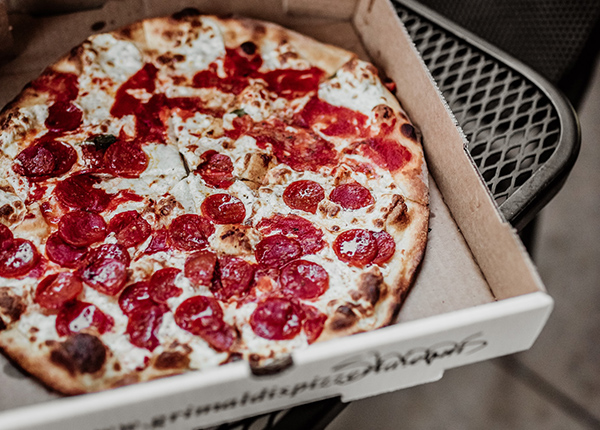
Market Research Example: Pizza Escape
Jade wants to start a pizza pick-up and delivery business called Pizza Escape in Polson, MT. She plans to offer pizza by the slice and whole pizzas for pick-up or delivery.
Jade thinks her customer groups will be:
- High school students and business people, who want a quick slice of pizza for lunch
- Adults of all ages who want pizza delivery to their homes
Online Research: Pizza Escape
To identify potential customers, Jade does a Google search for information about Polson, MT. She clicks on the city-data.com site and learns:
-
There are about 4,900 people living in Polson
- There are 1,990 households
- About 40% are married
- The average household size is 2.3 people
- The median age is 36 years old
- About 20% of the population is over 60
- About 25% of the population is under age 18
- The median household income is $33,023
- 17% of residents live at or below the poverty level
- About 51% of the adult population is employed
- Polson has mostly white (66%) or American Indian (20%) residents
- Polson is growing by about 2% per year
Because one of her customer groups is high school students, she also does a Google search on Polson High School
- She learns that there are approximately 475 students attending Polson High.


Survey Research: Pizza Escape
Jade did surveys with high school students and local business people to learn about their preferences.
First, she went to the high school and handed out brief surveys to about 50 students. She asked the students if they would help her learn about their preferences for Pizza Escape. She used her company description to briefly describe the business: “Pizza Escape will be a pizza pick-up and delivery business for students, businesses, and families in Polson”
Her survey included the following questions:
- In a typical week, how many days do you eat out over lunch?
- How much do you usually spend?
-
If pizza was available by the slice, what types of pizza would you prefer?
- Cheese
- Pepperoni
- Veggie
- Specialty
- How much time do you have over the lunch hour to grab food off campus?
She did a similar survey of local business people.
Survey Findings: Pizza Escape
From her brief surveys, Jade learned that high school students eat “fast food” for lunch about 2 days per week, and generally spend about $5. Local business people eat out more often (about 3 days per week) and spend closer to $10 for each meal. Almost all the high school students preferred pepperoni, while the local business people were more interested in specialty pizzas.

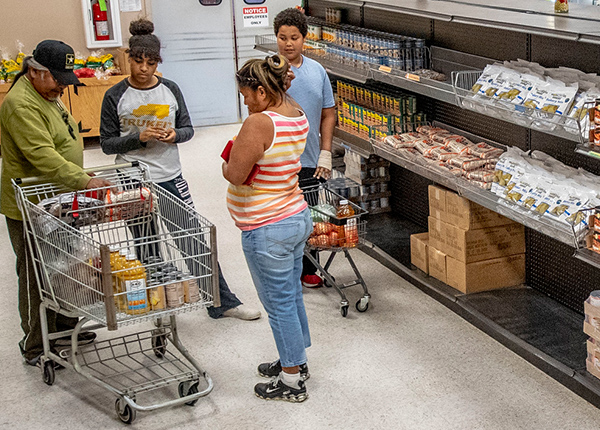
Interviews: Pizza Escape
Next, Jade interviewed several families when they were coming out of a local grocery store. She asked them the following questions.
-
Can you describe the best slice of pizza you have ever had?
- What kind of crust did it have? What type of sauce? Toppings?
-
How many times per month do you think you would order pizza for delivery, if this option were available to you?
- How many pizzas would you order at a time and what types?
- I am thinking of making a couple different types of specialty pizzas. Which of these options do you find the most appealing and least appealing? Why?
Interview Findings: Pizza Escape
From her interviews, Jade learned that families were excited about the option to order pizza and thought they would do so a couple times per month. People with kids usually said they would order more simple pizza combinations, such as pepperoni, because they would be trying to please the whole family. The “best slice” descriptions had some common features such as lots of cheese, medium crust, and red sauce.

Use the "Return to Tabs" button below to jump to the tab navigation bar.
Then continue by selecting the next tab in the list.
Similar Businesses
In order to create a good marketing plan, it is important to know about similar businesses. You should know about:
- The qualities of similar businesses’ products or services
- What similar businesses charge for their products or services
- How your business’s features and benefits are different from other similar businesses

Market Research
Market research is how you learn about similar businesses that you will be competing with for customers. Like customer research, it is valuable to use many sources of information.
Business Web Searches
Use the internet to search for specific types of businesses in your area to find similar businesses. You can also search city or town websites for business directories. For example, you could search “car mechanic, Warrens, Wisconsin.”
Look at the websites of similar businesses to learn about their products, services, and pricing. If there are not similar businesses in your area, look at websites of similar businesses in other communities that are about the same size as yours, or in nearby communities.
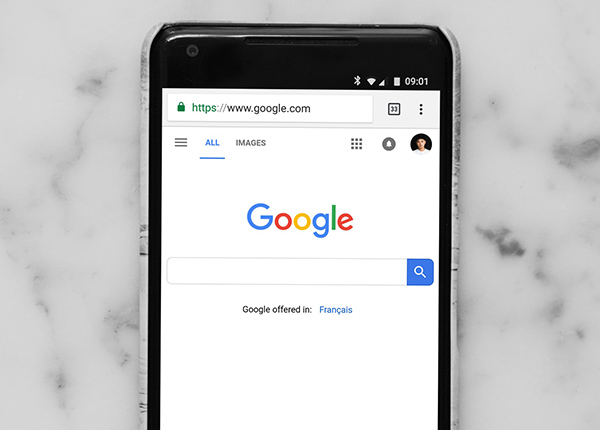

Business Interviews
To find out more in-depth information about similar businesses, an interview is a good strategy. Ask the owner or an employee questions about their business and how they operate day to day. The owner of a similar business might also become a future mentor that could help you learn the ropes of running your new business.
Example: Market Research for Pizza Escape
To learn about similar pizza businesses, Jade did a Google search for local pizza restaurants in her community. She found two businesses that offer pizza, including Little Caesar’s and Danny’s Grub Hub. She gathered some information from their business websites, and then visited each restaurant to observe customers, look at the menu, and talk to the owners. For each, she described the business, their customers, their strengths, and how her business will be different.
She put together descriptions of each business for her market research:
Little Caesar’s
- Description: Little Caesar’s offers inexpensive pizzas and chicken wings for pick-up.
- Customers: Little Caesar’s appeals to teenagers, young adults, and low to middle-income families who take advantage of the prices, deals, and quantity.
- Strengths: Little Caesar’s is part of a national franchise. Because of this, they benefit from television advertising and strong brand recognition. The local Little Caesar’s is well-established and located at a convenient location on the edge of town.
- Difference: Little Caesar’s does not deliver pizza and does not offer unique pizza options, such as pizzas with white sauce, or pizzas with locally-grown ingredients. They also do not offer pizza by the slice.
Danny’s Grub Hub
- Description: Danny’s Grub Hub offers pizza, along with other choices, such as wings, hamburgers, salads, and sandwiches. Danny’s pizza is served in house.
- Customers: Danny’s Grub Hub attracts middle-income young and middle-aged adults. The restaurant also attracts tourists who are passing through town. The restaurant has a loud and crowded environment, which is less suited to families with small children or senior citizens.
- Strengths: Danny’s offers unique pizza selections such as an assorted mushroom pizza on white sauce, and house-made sausage pizza with caramelized onion and goat cheese on red sauce. They also offer seasonal pizzas, such as the farmer’s market veggie, made with all local ingredients.
- Differences: Danny’s pizza menu is a bit out there for many local customers and the business does not offer pizza delivery or pizza by the slice.
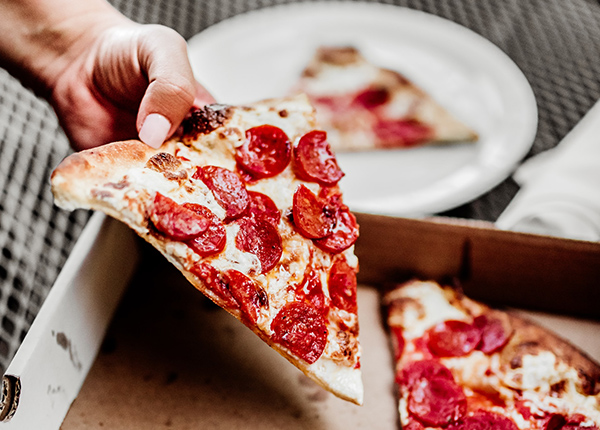

Business Niche
Once Jade completed some market research, she described how her business will be different from her competition:
My business will fill a gap by offering quality pizza for delivery. Although my pizzas will cost more than Little Caesar’s, they will taste better and attract customers who want a better product. In particular, I hope to target middle-aged and older people who may not have the time or desire to come to the downtown to pick up their pizza or go to sit-down dining. I will also offer pizza by the slice over lunch for locals and high school students wanting a quick meal.
Use the "Return to Tabs" button below to jump to the tab navigation bar.
Then continue by selecting the next tab in the list.
Marketing
There are many ways to advertise and promote your business to customers. In general, marketing methods include advertising, promotions, and public relations. These are the building blocks for your marketing strategy.

Marketing Methods
Advertising
Advertising tells people about your business and convinces them they should use your business. Low-cost advertising methods include:
- Personal contacts or conversations with customers
- Word of mouth referrals
- Business cards and brochures
- Posters and flyers
- Websites
- Social media posts
- Email newsletters
- Text messages
Higher-cost advertising methods include:
- Mass mailings
- Print advertisements, such as ads in magazines or newspapers
- Radio and television ads
Some of the best (and free!) types of advertising are word-of-mouth referrals from customers and customer reviews on social media.
To learn more about how to set up a website and social media accounts for your business, see the Website and Social Media tab in this chapter.
Promotion
Promotions are things you do to encourage people to buy your product or service. Promotional strategies include:
- Coupons
- Incentives (like buy one get one free)
- Discounted prices (having a sale around a holiday or special event)
- Free samples
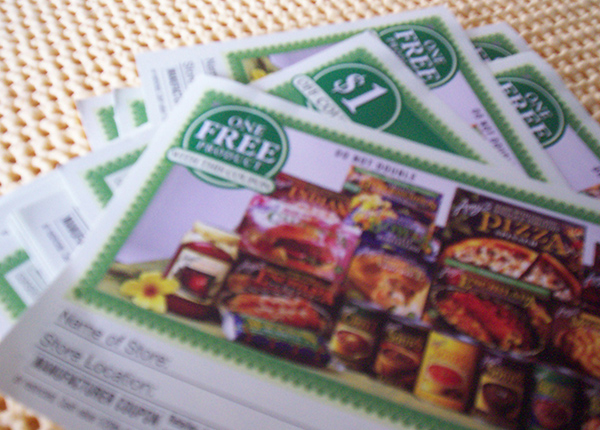

Public Relations (How to get the word out!)
Public relations are methods for telling people about your business. These are good for building awareness of your business. Public relations activities include things like:
- Attending or giving workshops or talks
- Sponsoring community activities
- Donating services or goods to community organizations as raffle prizes
- Blogging or providing useful information about a specialized topic on social media
Reaching Customers
When you develop your marketing strategy it’s important to think about who you are trying to reach and how to best do it. Don’t spend time and money advertising in places where your target customers won’t see your ads.
For example, if you want to reach teenagers and young adults, advertising on social media sites like Facebook or Instagram might be best. If you are trying to reach older adults, an ad in the local newspaper or flyers delivered door to door might be better choices.

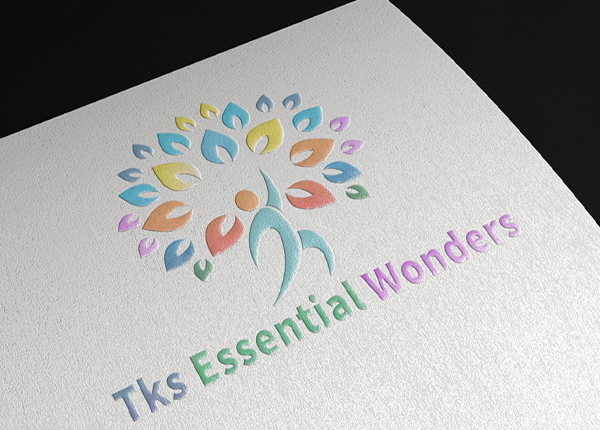
Reputation
No matter what marketing methods you use, you need to decide what you want to emphasize about your business. What do you want people to think about when they hear your business name or see your logo? Will it be high quality, helpful, reliable, creative, traditional, delicious, or something else?
Every business has a unique image. For example, if you have a cleaning business, you might want customers to think of your business as reliable and thorough. Or, if you are starting a jewelry business, you might want them to think about your products as unique, intricate, or well-made.
Key Messages
Think back to the last time you bought something.
- What did you think about the price?
- What did you think about the quality of the product or service?
- How were you treated?
- How would you describe that business? What kind of reputation does it have?
Now, think about your own business. To help you think about things to highlight in your marketing efforts, answer the following questions:
- What do you want people to think and share about your business?
- How will you deliver good customer service?
- How does your business location influence your product or service?
- How will things like packaging, brochures, business cards, and displays highlight your business’ qualities?
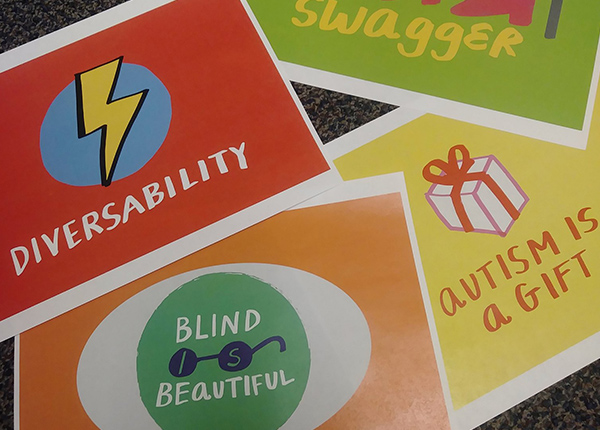
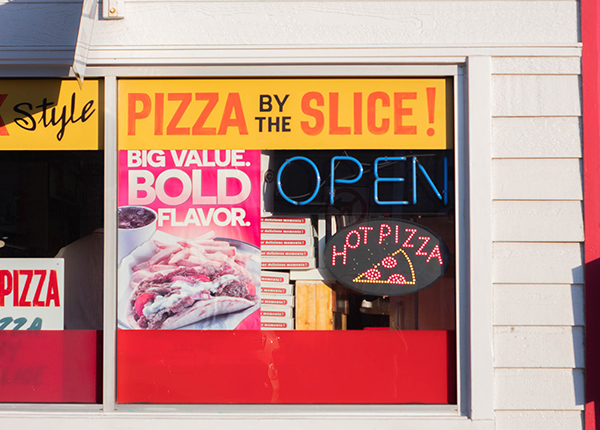
Example: Key Messages for Pizza Escape
Here are Jade’s answers to these questions.
- Whether it is pizza by the slice or pizza delivery, I want people to think about quality and convenience when they think about Pizza Escape.
- I want customers to feel like I value their time. I will have pizza by the slice ready and hot over the high school lunch hour. I will track how much time it takes to make and deliver pizzas based on orders, and will let people know how long to expect to wait for their delivery.
- My business location is within walking distance of our business district, and about 1 mile from the high school. There is lots of parking for quick pick-up.
-
In addition to my business name “Pizza Escape” I will develop some tag lines for my primary customer groups such as:
- A delicious and convenient way to feed the family.
- Sliced and ready for quick pick-up
Developing your Marketing Materials
With key messages in mind, you can start developing your marketing materials. Depending on your business and your marketing strategies, you might:
- Design a logo
- Create print materials, like business cards and brochures
- Collect customer contact information
- Develop a website
- Launch social media accounts
- Set up an online payment system


Reach and Frequency
Next, you need to consider the reach and frequency of your advertising.
Reach is the total number of people that receive an advertisement or promotion. If you want to increase reach, advertise in different places and to different types of customers.
Frequency is the number of times a person sees or hears an advertisement over a period of time. When you increase the frequency of your advertising, you increase the chances that people will remember what you do.
Example: Pizza Escape Reach and Frequency
Jade plans to make flyers to advertise her pizza business. She will place her flyers in places that reach different customer groups (reach). She will put flyers on cars at the grocery store and along neighborhood streets to reach families and households. She will put flyers on cars at the high school parking lot and football games to reach students. She will also pass out flyers to local businesses to attract business owners.
She decided she would distribute flyers once per month (frequency) to remind people about her business, especially as she is getting started.
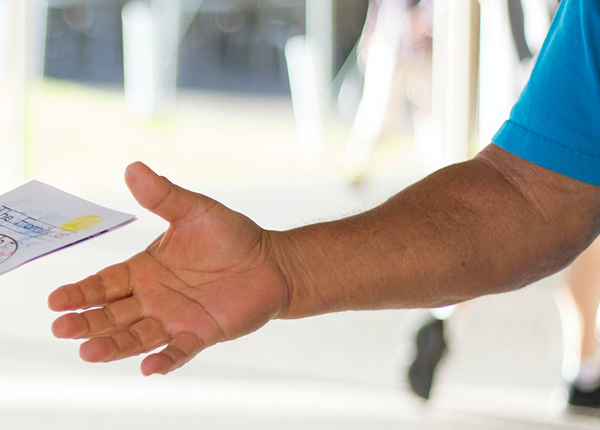

Developing Your Strategy
Finally, you put all this information together to decide what you will do to reach your customer groups. Think about the following questions to get started:
- What marketing methods will you use?
- How often will you use each method?
- Will you offer giveaways, discounts, coupons, and promotional sales?
- Will you take part in any public relations activities, such as donating items to a charity event, or handing out samples outside the local grocery store?
- Will you collect email or telephone contact information for informational newsletters or text messages?
- Will you collect customer satisfaction information that can be used to promote your business (or to improve your product or service)?
Example: Pizza Escape Strategy
Jade answered these types of questions for Pizza Escape.
The primary marketing methods and strategies I will use for my business include:
- A website, that includes a menu with pick-up and delivery options, and an online ordering option.
- A customer feedback form on the website
- Flyers with coupons distributed one time per month as the business is getting started and then every other month after that.
- Text messages sent once per week with “slice of the day” deals to customers who sign up.
- Buy-one-get-one-free coupons for pepperoni pizza by the slice for high school students or frequent-buyer punch cards (but 10 slices, get the next 2 slices free)
- Refrigerator magnets that have pizza delivery menu options and Pizza Escape contact information, included with the first order we receive at each delivery location.

Click on the "Section Review" button for a short review of the content of this tab.
Use the "Return to Tabs" button below to jump to the tab navigation bar.
Then continue by selecting the next tab in the list.
Websites and Social Media
This section includes how-to information to help you get your business set up online.
In this section, we cover:
- Websites: why you should probably have one, what to put on one, and how to make one.
- Online market platforms: if you’re selling a product, you might want to have a page/profile on an online market platform (for example, Etsy or eBay).
- Online and mobile payment systems: learn about different ways to accept credit card payments, both on a website and with a mobile set up (like with your smart phone at an art fair or community event)
- Social media: why it’s a good idea for businesses, and how to get started
Because technology changes constantly, this information may become outdated.
We recommend using this information as a starting place, and then doing more online research and talking to a business mentor and your VR counselor to see what might work best for you.

Websites
It’s a good idea for every business, even small ones, to have a website. For many people, the internet is the first place they look for information about a business.
-
VIDEO: Starting and Planning a Website (2:50 minutes)
- This video provides a short overview of things to think about when you are developing a plan for your website.
- Takeaway tip: get your basic information online first. As you have more time and you learn more skills, you can edit and add more to your website.
Website Information
All business websites should include some basic information.
- Describe your product or service
- Tell about you as the owner
- Provide contact information
- Provide hours and location (if appropriate)
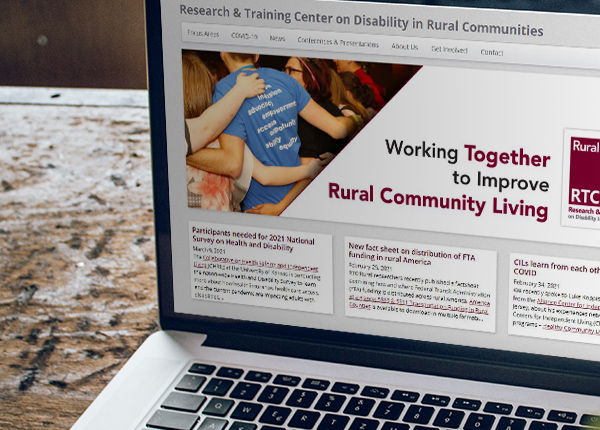
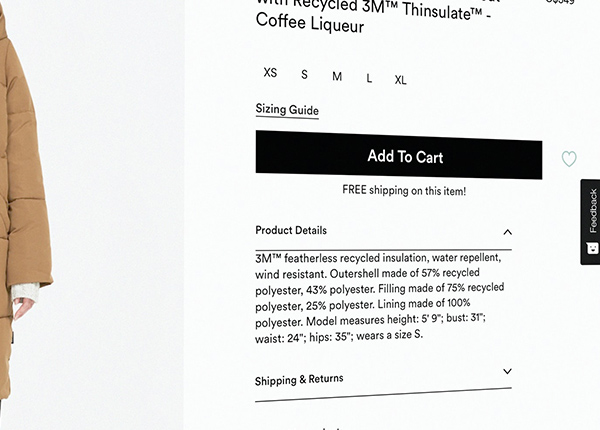
Optional Website Information
Additional website features will depend on your business and how you intend to interact with customers such as:
-
A way for customers to buy your product or service (which will require a link to a payment site like PayPal or Square Space).
- Find more information about online and mobile payment options below.
- A calendar of events
- Testimonials or reviews
Additional Website Considerations
-
Easy to use
- When you’re picking a website builder platform, pick one that is easy for you to make changes to and use.
- Make sure to keep your business website updated.
- If you’re having someone help you set up your website, will that person be available in the future to help you make changes? If you won’t be making changes yourself, make sure to have someone who can help you. If your hours or location change, your customers will need to know!
-
Getting the word out
- When making other marketing materials like business cards and print ads, make sure to put your website on them.
- Connect your social media accounts to your website. That way, if people are interested in getting updates they can easily find and follow your business social media accounts.
- Most website builders will have options to add links to your business’s social media accounts.
-
Mobile-friendly
- It is a good idea to make it easy for your customers to be able to look up your website and information on their phones.
- Have a mobile-friendly website: a lot of people have smartphones and get on the internet that way.
- When you pick a website builder, make sure it has mobile-friendly design.
-
Accessible
- Make sure your website is accessible for people who use assistive technology or who use the keyboard to navigate a website.
-
VIDEO: Wix.com | Learn How to Make Your Website Accessible (Aug. 11, 2019; 3:48)
- This video explains how to make an accessible website using the Wix website builder platform.
-
VIDEO: How I do an accessibility check—A11ycasts #11 (Jan. 13, 2017; 12:16)
- Once you have your website set up, this video teaches you how to check to make sure it’s accessible.
NOTE: if you are selling products, you may want to start with a profile (or ‘store’) on an online market platform like Etsy or eBay. You can always start there, and create a website after your business is up and running. See Online market platforms below for more information.


Website Builder Platforms
- There are many different website builder platforms. Here are a few:
-
Wix
-
How to Make a Website in 2020 (last updated on Jan. 12, 2020)
- Step-by-step guide to create, manage, and develop your website.
-
VIDEO: How to Make a Website with WIX | Step by Step Guide 2019 (Dec. 3, 2018; 1:04:27)
- Video that walks you through how to build a website with Wix.
-
How to Make a Website in 2020 (last updated on Jan. 12, 2020)
-
Weebly
- VIDEO: Creating a Website on Weebly- 2019 (May 3, 2019; 29:59)
-
Squarespace
- VIDEO: Squarespace Tutorial: How to use Squarespace for beginners (Aug. 26, 2019; 23:27)
- Step-by-step instructions on how to setup a website using Squarespace.
-
Google My Business
- A free tool to help you promote your business on Google Search and Google Maps. You need to create a profile. In addition to other tools, you can make a free business website.
-
VIDEO: How to create a Website in Google Sites for Free (May 28, 2019; 23:28 minutes)
- Step-by-step instructions for setting up a website using Google Sites. Includes links for more information.
If you live near a community college or university, there might be a class or student who could help you get a website up and running. Ask your VR counselor to help you look into this (or if there are other resources to help you set it up).
More Website Information
-
VIDEO: The Top 6 Website Builders! [2019] (Dec. 13, 2019; 8:17 minutes)
- A tech reviewer gives an overview of his six favorite website builders: Squarespace, Wix, Weebly, Strikingly, Shopify, and Format.

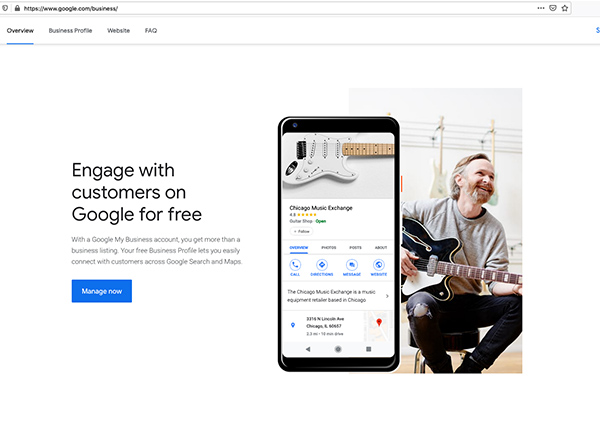
Google My Business Resources
- WEBSITE: Step-by-step instructions on how to get started with Google My Business: The Definitive Guide to Google My Business in 2020
-
VIDEO: Top Tips for Google My Business (July 2, 2019; 6:52 minutes)
- Tips on how to make sure your Google Business Profile is set up to help customers find your business
Website Examples
- Believe in Me Photography - Elizabeth creates packaged greeting and Christmas cards from her original photographs
- Patchwork and Paws Dog Gear - Shay and Sierra sell high quality gear for service dogs
- Earth Within Flowers - Melissa offers floral design and wreath making classes
- AB Technology Solutions - Alex provides computer technology support
Elizabeth, Melissa, and Alex are three of our Featured Business Owners.
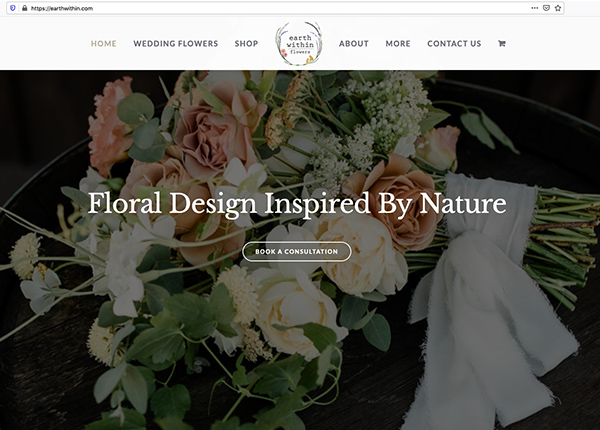
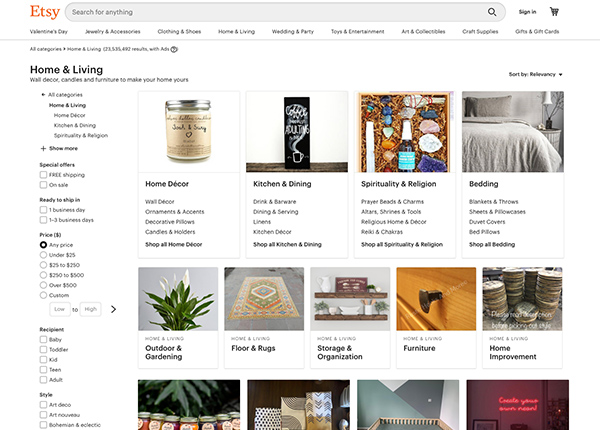
Online Market Platforms
If you are selling a product you could create a profile on an online market platform. This means you won’t have to create your own website, but it also means you will have to pay either a monthly fee or a commission fee, depending on the platform.
There are many different online market platforms. Here are three:
-
Etsy
- Learn How to Sell on Etsy
- Learn about how to sell on Etsy in the Etsy Help Center: Opening an Etsy Shop
- VIDEO: How to Open an Etsy Shop in 3 Simple Steps (Oct. 15, 2015; 3:31 minutes)
-
VIDEO: How to start an Etsy shop- Selling on Etsy for Beginners (Feb. 5, 2017; 6:52 minutes)
- A woman shares what she’s learned using Etsy to sell her artwork. She gives good tips on how to get started for the first time.
-
eBay
- Learn about how to sell things on eBay in the eBay Seller Center: How to Sell
-
VIDEO: How to sell on eBay for beginners [Step-by-step guide] (June 18, 2018; 12:08)
- A step-by-step guide to using the eBay mobile app on your phone to post something to sell
-
Amazon Handmade
- You have to apply to be an Artisan to sell through Amazon Handmade. Learn more here: Amazon Handmade
-
VIDEO: The Amazon Handmade Experience (June 18, 2019)
- An artist shares her experience about getting signed up through Amazon Handmade.
To find other online market platforms, use search terms like “places to sell handmade items online” or “websites to sell crafts” or something similar.
Sales Platform Information
-
ARTICLE: The 6 Best Websites to Sell Crafts (Sept. 7. 2017)
- Lists pros and cons of six different online market platforms, including the three listed above.
-
VIDEO: Selling on Amazon Handmade vs Etsy! Which Makes the Most Money!?? (Aug. 9. 2019; 14:48 minutes)
- Angela Jasmina, a small business owner who has her own embroidery business, shares her perspective on these two platforms and which she likes the best.
-
VIDEO: Square vs PayPal 2019: A Side by Side Comparison (Jan 21, 2019; 14:35 minutes)
- This video compares these two options and talks about the pros and cons of each, including being able to accept payments on a mobile device (like a phone or tablet), and having a payment option on your website.
-
VIDEO: Paypal, Stripe, Square vs Merchant Account - Which One Is Best? (Aug. 17, 2018; 17:19)
- This video explains the differences between PayPal, Stripe, Square, and true merchant accounts. It includes questions to think about to help you decide which is the right option for your business right now.
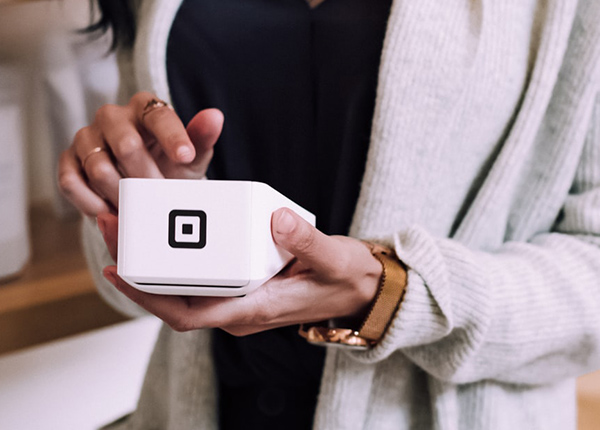
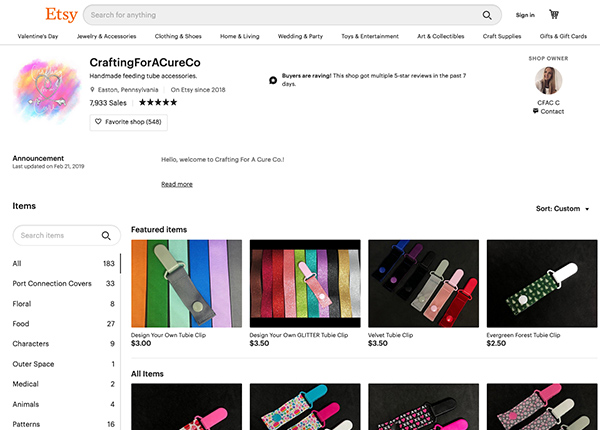
Sales Platform Examples
- Etsy shop: CraftingForACureCo - handmade feeding tube accessories
- Etsy shop: JastickMouthstick - high quality mouth stick products
Social Media
Social media can help you interact with customers and point them to your business website. When customers share your posts through their personal networks, the total number of people who see your post and learn about your business goes up.
There are many different social media platforms out there, and deciding which one to use can feel overwhelming. Remember—social media is a tool, one of many that you can use for your business. Which social media site you use depends on who you are trying to reach. Don’t spend time creating a social media account on every site if your customers only use one or two of them. Part of your market research needs to include which social media platforms your target customers use.
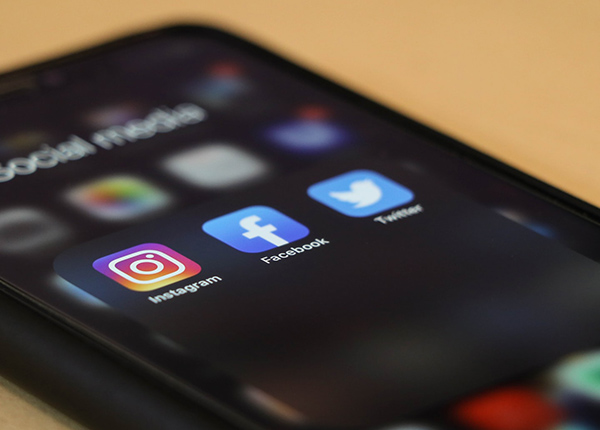

Social Media is Free Advertising!
It’s free to sign up and create social media accounts for your business. The only cost is your time and energy in setting up the accounts and posting on them. Keep this in mind as you set up accounts. Don’t let social media intimidate or overwhelm you. We recommend setting aside a set amount of time for social media each week and sticking to that.
There are tools and programs you can use to organize and schedule social media posts. You can also schedule posts directly in Facebook. Learn more:
Getting Started on Social Media
There are many different types of social media platforms out there, and which ones you use should depend on which ones your customers use. Two of the most popular are Facebook and Instagram (which is owned by Facebook). Here are some resources for getting started:
-
Facebook
-
Facebook for Business
- Resources from Facebook to help business owners learn how to do things like create business pages and create ads.
- VIDEO: How to Create a Facebook Business Page: Full Tutorial, Expert Secrets & Pro-Tips (Sept. 11, 2019; 21:48)
-
Facebook for Business
-
Instagram
- Guide to Get Started on Instagram for Business
-
VIDEO: How to Setup an Instagram Business Profile (Sept. 21, 2016; 3:08)
- Step-by-step instructions on how to set up a business profile, and explains some of the features.
If you’re interested in learning about other platforms, there are many resources on the internet.
-
Choosing the Right Social Media Platform for Your Business
- This article lays out 3 steps to help you decide which social media platforms to use. It also has a brief overview of Facebook, Twitter, Pinterest, YouTube, LinkedIn, Instagram, and Google+.
-
VIDEO: 5 Tips to Make Your Social Media Disability Accessible | Fashioneyesta (April 13, 2019; 7:51)
- Some tips to make sure that people who use screen readers and voice-over functions can understand your social media posts

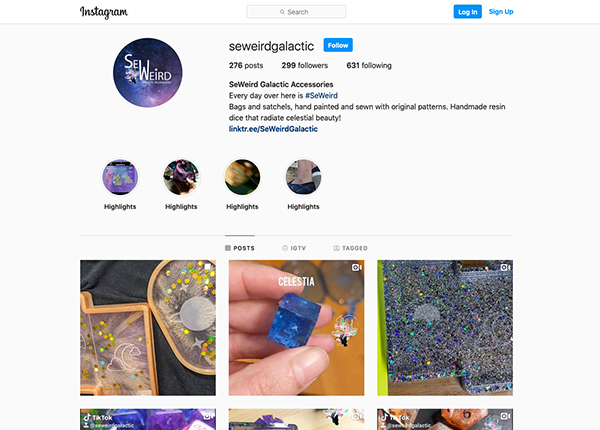
Social Media Examples
- Joe Stone - Motivational speaker, outdoor adventurer, and filmmaker
- Upcycled - Reuse gift shop
- Fancy Coffee Truck - Mobile barista
- SeWeird Galactic Accessories - Bags and satchels, hand painted and sewn with original patterns. Handmade resin dice coming soon!
- Jbeoin - Artist and Illustrator Jessi Eoin
Use the "Return to Tabs" button below to jump to the tab navigation bar.
Then continue by selecting the next tab in the list.
Chapter Review
The marketing plan contains information about your business qualities, target customers, and how you will advertise and reach customer groups. To develop a good marketing plan you need to:
- Describe your products or services and the qualities and benefits of your business
- Define your customer groups
- Conduct research about potential customers and similar businesses
- Develop your marketing materials, such as logo, website, and business cards
- Describe your advertising and promotion strategies and methods
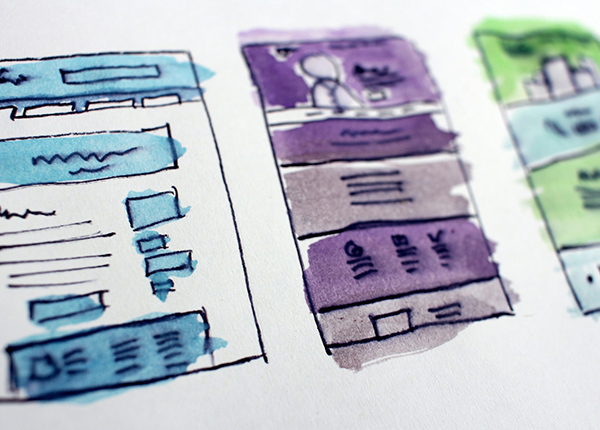
Prepare
Marketing is an important part of getting your new business up and running. You need to spend time researching and thinking about your marketing strategies.
First, figure out the important qualities of your business. What makes your business different than similar businesses in your area? What would attract customers to your business?
Next, identify your target customers.
Then, brainstorm some ways to market your business to them. Use your answers from the Business Qualities worksheet from this chapter and from the About Your Business worksheets from Chapter 3 to help you complete the marketing section of your Business Plan Outline.
Click on the “VR Counselor Review” button for a short review of information for VR counselors from this chapter.
Check Your Understanding
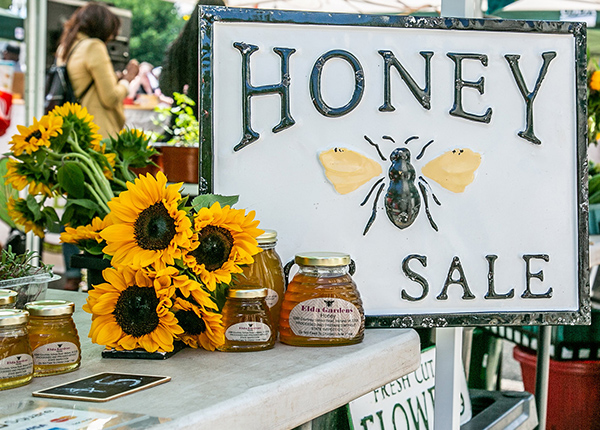
Checking the Marketing Plan
This section helps you check your understanding of the material covered in this chapter. First, answer some questions about the marketing plan in this section. Then, apply what you have learned by reviewing business scenarios for Pauline and Sally in the next tabs.
Marketing Plan Questions
Write down answers to the following questions about the marketing plan. When you are finished, click on the REVIEW YOUR ANSWERS button to compare.
- What things should you think about when you pick your business name?
- Why is it important to understand your business’s different customer groups?
- What are some strategies for learning about your potential customers?
- Why is it important to know things about similar businesses or your competition?
- What are some different ways to tell customers about your business?
- Why should businesses have a website?
Scenario 1: Pauline
Pauline is thinking about starting a pottery business. Here is a brief background about her business idea.
- Pauline has been making pots as a hobby for several years and wants to start a pottery business.
- She lives on a prairie and plans to use local and natural materials for her products.
- She named her business Pauline’s Natural Pottery on the Big Sky Prairie.
- She plans to sell her pottery at a local gift shop, the farmer’s market, and online
- Her town is rather small, but a lot of people come to the area to see sandhill cranes and other birds in the spring.
- Community gatherings in her town often occur at the senior center, community center, and farmer’s market.
- Her nephew is a graphic artist and has agreed to make a logo for her business.
Based on the information provided, write down your answers to the following questions. Then see how your answers line up with those provided. Keep in mind there are no “right or wrong” responses.
- First, describe if you think her business name is good or could be improved and why. Then list some other possible names.
- Next, list some questions she could ask in a survey or interview to learn more about her potential customers.
- Finally, describe how she might market to these customers.

Scenario 2: Sally
Sally is thinking about starting a small rock and gem shop. Here is a brief background about her business idea.
- Sally wants to start a business that sells rocks, gems, and fossils called Sally’s Stones.
- She also plans to offer educational programs for children and adults in her shop, at local schools, and the natural history museum.
- Sally lives in Moab, Utah, a place with a lot of unique geology. Many seasonal tourists visit because of the geology.
- If her business goes well, she might start offering geology tours.
- Sally doesn’t have much money for advertising, but she knows how to use social media
Based on the information provided, think about Sally’s business and how she can create a marketing plan that will set her up for success.
- First, think about the business name. Does it describe what the business does or sells? Is it too long, too short, too detailed, or to vague? What are some other possible business names?
- Next, think about how she can learn more about her potential customers. What questions could she ask?
- Finally, think about how she can tailor her marketing strategies to those customers.
